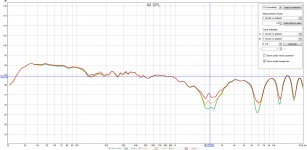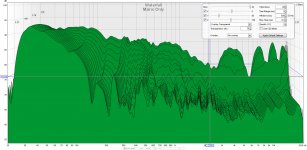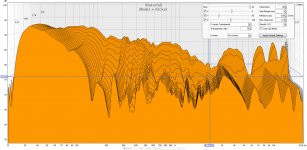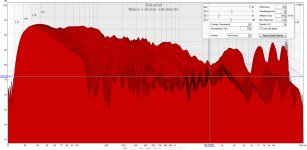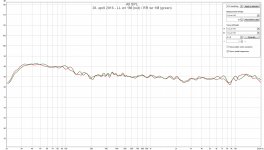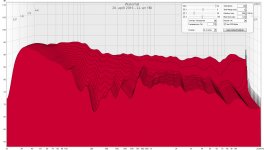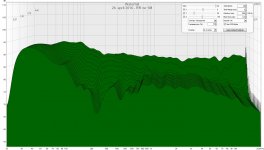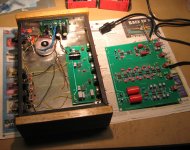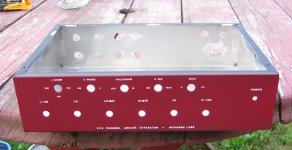Some excellent measurements were made by jim1961 and posted on my 2 towers thread.
Here's a link: http://www.diyaudio.com/forums/full-range/242171-making-two-towers-25-driver-full-range-line-array-233.html#post4745046
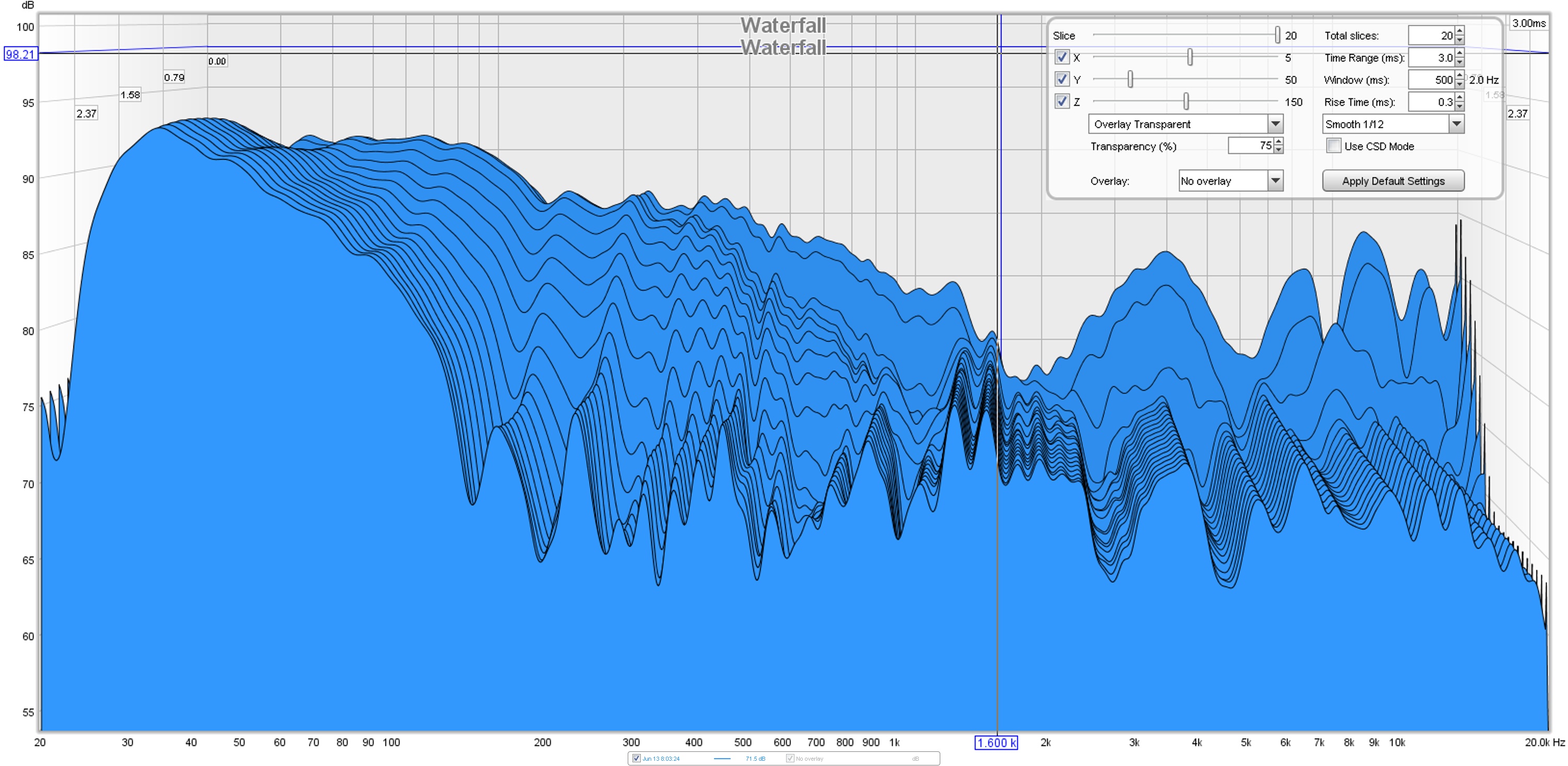
Recorded with one mic at ear position shrouded by a dummy head and both channels playing.
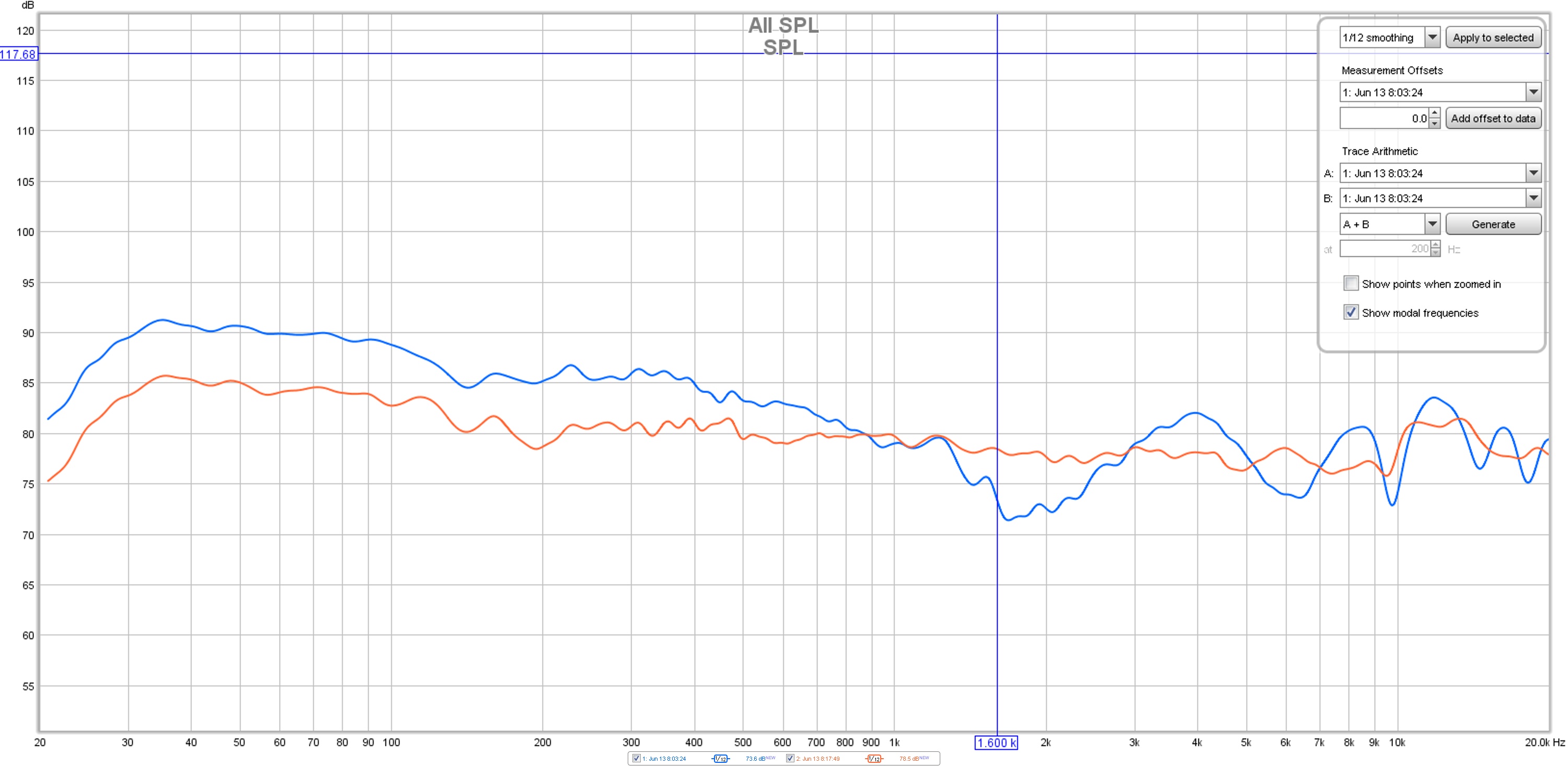
A comparison of the FR of one channel playing and both channels playing, recorded at the ear position with one mic and a dummy head.
Looks pretty familiar, doesn't it? 🙂
For those that don't know jim1961, he has a room dedicated to audio that is way above average. An excellent play garden for this sort of thing really. Look at his room and the immense job to get it to perform like that over here: https://www.gearslutz.com/board/studio-building-acoustics/817205-my-listening-room.html
I recommend it as a read to anyone interested in room treatment and what it can do for measurements etc... I loved poking around in a few of his REW files. I had not seen anything like it, honestly. Forget about it, I recommend it as a good read for anyone interested in Audio!
Here's a link: http://www.diyaudio.com/forums/full-range/242171-making-two-towers-25-driver-full-range-line-array-233.html#post4745046

Recorded with one mic at ear position shrouded by a dummy head and both channels playing.

A comparison of the FR of one channel playing and both channels playing, recorded at the ear position with one mic and a dummy head.
Looks pretty familiar, doesn't it? 🙂
For those that don't know jim1961, he has a room dedicated to audio that is way above average. An excellent play garden for this sort of thing really. Look at his room and the immense job to get it to perform like that over here: https://www.gearslutz.com/board/studio-building-acoustics/817205-my-listening-room.html
I recommend it as a read to anyone interested in room treatment and what it can do for measurements etc... I loved poking around in a few of his REW files. I had not seen anything like it, honestly. Forget about it, I recommend it as a good read for anyone interested in Audio!
Last edited:
The waterfall graphs seem like one of the most revealing ways to test a system, whether it's just a speaker or including the room acoustics. But Linkwitz made a good point when he mentioned that with the old MALISSA test system, the lower frequencies weren't turned on long enough for an entire period of waveshape to be analyzed, so the results would be wrong for anything below maybe 800HZish (I can't remember the exact frequency). So he purposed a variation that would be made out of gaussian envelop tone bursts that would have a consistent number of waveform cycles at each frequency, and be made out of incremental frequencies (many). Your waterfall software may already be compensating for this somehow. Just thought I'd mention it.
Excellent indeed! Just what we wanted to see. Yes, it does look familiar. 🙂Recorded with one mic at ear position shrouded by a dummy head and both channels playing.
Glad to see it - as I don't know that I will get to do any measurements here before I leave.
I did yesterdays experiment with the mains only (Green), with Kickers (Orange) and with my Kickers + Ambient channels (Red)
Interesting?
Interesting?
Attachments
Last edited:
.....Interesting?
Yes nice to see real world situation from within a good room and system setup, verse pure left or right panned signal there is quite some difference comparing to your shared mdat-file called "16 04 28 LL RR wr: Mains + Ambient channels (1M)" 🙂.
Attachments
Yes nice to see real world situation from within a good room and system setup, verse pure left or right panned signal there is quite some difference comparing to your shared mdat-file called "16 04 28 LL RR wr: Mains + Ambient channels (1M)" 🙂.
Sweeps with both channels driven are nearly always going to show some major differences in the mids and up compared to single channel measurements with a single mic.
Good thing we have two ears 😛
My 2 to 3 channel analog converter; "The Extractor" is nearly done (finally). It's got a stereo matrix working against an L+R function for separation, and an optional inter-aural cancellation function (Holographic Generator) for the L and R outputs, and/or low bass boost circuit (+10dB at 32HZ with fast rolloff below that). Center out has a 4 section Baxandall tone circuit.
Attachments
True! But even they give us problems with 2 sources.Good thing we have two ears 😛
The rear is boring. 2 inputs, and 2 outputs for L, R and Center (each). Typical use might only need one output for L, R and C, but if you later wanted to add side or rear channels that had further processing (delay, reverb, phase invert?), or add an additional powered EQ'd woofer using the 2nd C output, it's all there. I put the power switch on the rear next to the fuse because I never bother to turn off my low current units (just the power amps). It's been argued that turn-on and turn-off, and temperature change inside some devices may age the parts more than steady operation 24/7. I doubt if that's a big thing, but it also allowed me to keep AC wiring real tight and away from any sensitive circuitry, so minimal hum.Nice one, Bob.What does the back panel look like? Ins and outs,
Pano, do you still have plans to look into the comb patters of a near field speaker setup?
Preferably with a dummy head etc...
It was on my agenda for a while but I just don't have the means. I'd still like to see it done somehow. I'm back on tests which your shuffler, among other things.
I'm moving slowly these days and just take the time to enjoy long listening sessions with music most of the time. I currently have your RePhase shuffler (rephrase-shuffle-2.wav) under test with a bit of cross talk signal added to the left and right speaker.Though for a wider sweet spot I only use the cross talk part. I'll go on as long as I'm still having fun 🙂.
And Bob, any news from your Center channel project? That answer might deserve a thread of it's own though!
Preferably with a dummy head etc...
It was on my agenda for a while but I just don't have the means. I'd still like to see it done somehow. I'm back on tests which your shuffler, among other things.
I'm moving slowly these days and just take the time to enjoy long listening sessions with music most of the time. I currently have your RePhase shuffler (rephrase-shuffle-2.wav) under test with a bit of cross talk signal added to the left and right speaker.Though for a wider sweet spot I only use the cross talk part. I'll go on as long as I'm still having fun 🙂.
And Bob, any news from your Center channel project? That answer might deserve a thread of it's own though!
I think my Extractor does what it's supposed to do real nice, but I learned that the center speaker really does have to be pretty good, or the vocals and whatever center stuff sounds too different. It doesn't integrate well. The center speaker bar with it's 5 inch woofers doesn't quite have the warmth of the side speakers, despite the center speaker tone controls doing what they can do. Some audiophile friends didn't like it, and I believe it's because of that.
Interesting... how much of the center panned stuff still gets played by the left and right speaker? Can you mix in the center between certain frequencies and still have the left and right speaker play the whole thing?
I think my Extractor does what it's supposed to do real nice, but I learned that the center speaker really does have to be pretty good, or the vocals and whatever center stuff sounds too different. It doesn't integrate well. The center speaker bar with it's 5 inch woofers doesn't quite have the warmth of the side speakers, despite the center speaker tone controls doing what they can do. Some audiophile friends didn't like it, and I believe it's because of that.
I have always contended that the center speaker needs to be the same quality as the sides. This idea of using a smallish center speaker bar with far better sides just never seems to work.
The funny thing is that I was worried that there wouldn't be enough separation between the center output and the sides, since the L-XR stereo matrix is passive (no active steering). After listening to it, I found that it works much better with even less separation. The integration is better, and room acoustics comb filter effects are better filled in when sounds are emitted by more than one speaker. I'm glad I have a continuously variable L-XR function (the X is variable), so I can set it the way I like. I haven't tried frequency selective processing, other than the 2 lowpass options in the L-XR circuit that are loosely based on the research of David Griesinger (formerly of Lexicon). Those options depend on the program material, and whether or not I'm sitting in the middle where I should be, as opposed to over by my fireplace (where I usually am as it turns out...).
Lately I've been recording a great local band called the Freak Mountain Ramblers, and mixing and burning CD's for them, so I've had to turn off the Extractor to do the mastering of the recording, so it sounds right on a regular stereo... Recording and mixing has been very educational. I have two high end stereo systems that I've designed and built, and $300 Beyer headphones. My CD's of this band sound very different on each system and through the headphones (room acoustics are evil). I also played the CD's in my car stereo, and again very different... It's a real challenge to adjust tone, balance of the various feeds and compression (on vocals and bass only). I was talked into using the Reaper program for mixing, which is way too complicated for what I need. I plan to try Audacity which I hear may be about right next. Off subject here, sorry.
Lately I've been recording a great local band called the Freak Mountain Ramblers, and mixing and burning CD's for them, so I've had to turn off the Extractor to do the mastering of the recording, so it sounds right on a regular stereo... Recording and mixing has been very educational. I have two high end stereo systems that I've designed and built, and $300 Beyer headphones. My CD's of this band sound very different on each system and through the headphones (room acoustics are evil). I also played the CD's in my car stereo, and again very different... It's a real challenge to adjust tone, balance of the various feeds and compression (on vocals and bass only). I was talked into using the Reaper program for mixing, which is way too complicated for what I need. I plan to try Audacity which I hear may be about right next. Off subject here, sorry.
Last edited:
... It's a real challenge to adjust tone, balance of the various feeds and compression (on vocals and bass only). I was talked into using the Reaper program for mixing, which is way too complicated for what I need. I plan to try Audacity which I hear may be about right next. Off subject here, sorry.
Well, taking the chance of driving the discussion further off mark, I suggest that you try the demo download of Harrison's Mixbus 32C product. It's easy to use and reminds me of the old large format consoles that I grew up on and miss so much. The EQ is pretty good too.
Harrison Consoles: Mixbus32C
Thanks for the info. Another guy recommended Acoustica. I'm short on dollars these days, so may go with something under $100.Well, taking the chance of driving the discussion further off mark, I suggest that you try the demo download of Harrison's Mixbus 32C product. It's easy to use and reminds me of the old large format consoles that I grew up on and miss so much. The EQ is pretty good too.
Harrison Consoles: Mixbus32C
- Home
- Loudspeakers
- Multi-Way
- Fixing the Stereo Phantom Center
